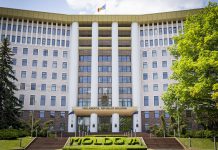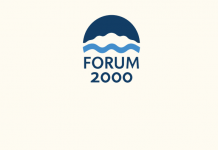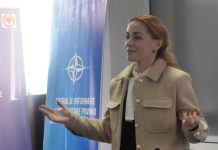The findings of the 2012 Index show that:
Moldova is the best performer, coming first in Linkage, Approximation and Management.
The second best performer is Georgia, coming second in Approximation and Management, and third in Linkage.
Ukraine is the third best performer, ranking second in Linkage, third in Management and only fourth in Approximation.
Armenia, although fourth in Linkage and Management, ranks third in Approximation.
Azerbaijan ranks fifth in Linkage and Approximation, while sharing fourth position with Armenia in Management.
Belarus closes the list in all three dimensions.
Key results at a glance
In terms of overall ranking, these results are similar to those we presented in 2011 Index. Yet, some changes are evident in each dimension. In 2011, Georgia was the best performer for Management. The fact that Moldova scores better this year has purely methodological reasons. Indeed, in terms of policy and institutional arrangements for European integration, no significant changes occurred in any of the EaP countries. However, this year we relied on a more elaborate set of questions to assess Management, which accounts for different results. The margin between Moldova and Georgia is very slim, suggesting that both countries perform at about the same level.
In the 2012 Index, Ukraine has found itself behind Armenia in Approximation, although the two countries were at the same level in 2011. This reflects some trends on the ground. Firstly, Ukraine has slumped where democracy performance is concerned. Secondly, its business climate has deteriorated further, while its DCFTA performance—a subcategory introduced only in the current Index—is only slightly better than Armenias.
In the current Index, Armenia appears to be gaining ground. Its Deep and Comprehensive Democracy” score is almost the same as Ukraines. At the same time, Armenia outperforms Ukraine in Market Economy and DCFTA” and Sectoral Approximation.” Moreover, there was a marked intensification of dialogue with the EU in many areas over the past year.
Another difference from the 2011 Index is the fact that Armenia and Azerbaijan demonstrated the same level in Management. As with Georgia and Moldova, this has more to do with changes in methodology. In fact, the margin between Armenia and Azerbaijan in this dimension was also slim last year.
As in last years Index, the results seem to divide EaP countries into two groups: Moldova, Georgia and Ukraine, the frontrunners with EU membership aspirations; Armenia, Azerbaijan and Belarus, the stragglers who have not indicated serious interest in joining the EU. As already stated, however, if Ukraine continues to deteriorate, while Armenia continues its current ascending trend, ranking might look differently already in the next year Index.
In addition to the proactive position of individual EaP countries, the degree of EU involvement also matters. From this perspective, Belarus is understandably the least advanced among EaP countries. Political will also plays an important role, making it no surprise that Moldova is the frontrunner in the Index, given the political situation following its change of government in 2009.
Interestingly, Moldova demonstrated the best performance in all three dimensions, which supports the assumption underlying this Index—that increased linkages and approximation mutually reinforce each other. This assumption seems to hold true for all the EaP countries, although this year we saw increased deviations. For instance, although Ukraine ranks second in Linkage, it ranks only fourth in Approximation and third in Management. This suggests that, as in the previous year, Ukraine is not making the best use of its stronger record and more advanced level of cooperation with the EU compared to the other countries. By contrast, Armenia and Georgia performed well in Approximation, despite being less advantaged in Linkage.
Also, while Moldova, Ukraine and Belarus have somewhat lower scores in Approximation compared to Linkage, the other three EaP countries are doing better in Approximation than in Linkage. This suggests that, despite the fact that Armenia, Azerbaijan, and Georgia are less advantaged where Linkage is concerned, partially due to their greater geographical distance from the EU, they might be catching up in Approximation.
Looking at specific categories in the Index reveals interesting cross-country findings. For instance, Moldova, although the best performer in most areas, could have done better where transport sector approximation is concerned. Together with Armenia, Moldova also does poorly where trade in services is concerned. Georgia has the highest score for trade in goods with the EU and demonstrates the best business climate and DCFTA performance. Georgia also shows the best results for an independent judiciary and combatting corruption.
On the other hand, despite demonstrating the most advanced level in Trade and Economic Integration” Ukraine does more poorly for Market Economy and DCFTA.” This is related to Ukraines poor business climate and DCFTA approximation, which could have been better after four years of negotiations. For instance, Ukraine is more advanced than most countries in Sectoral Cooperation” for Linkage, coming first in freedom, security and justice, energy, and transport. But it is behind other countries in all these sectors for Approximation. This confirms the trend we noticed last year: when it comes to Ukraine, greater Linkage does not mean deeper Approximation.
By contrast, Armenia is the second best performer, after Moldova or Georgia, on many aspects of Approximation. These include quality of public administration and sector transition to a market economy. Armenia also demonstrates the same level of Sectoral Approximation” as Moldova, outperforming other countries. It is especially advanced and the best performer where approximation in the energy sector is concerned. For instance, Armenia just recently became observer in the Energy Community, yet Ukraine and Moldova, which are full-fledged members of the Energy Community, lag behind on Energy Approximation. Armenia is also the best performer where approximation in the transport sector is concerned and in its domestic policies on education, culture, youth, information society, media, and audio-visual use. This is despite the fact that Armenia has the lowest scores on both energy and transport where Linkage is concerned. In short, despite geographical distance from the EU and less advanced links with it, Armenia is serious about domestic performance.
Azerbaijan shows relatively good results where approximation in the transport sector is concerned and in its domestic policies on education, culture, youth, information society, media, and audio-visual use. Elsewhere, it is behind in many areas and outperforms only Belarus.
Belarus, although far behind other countries in most spheres, offers some surprises as well. For instance, it enjoys the most intensive trade in services with the EU.
Updated methodology
Notably, the 2012 Index is based on a more elaborate set of questions than the 2011 Index was. The 2011 Index was based on nearly 400 questions, while this years Index is based on 695 questions. In contrast to the previous Index, the structure of each of the three dimensions is different. For instance, we introduced Sectoral Cooperation” section in Linkage and Sectoral Approximation” section in Approximation to give less weight to each individual sector.
We introduced a new section called Deep and Sustainable Democracy” to the Approximation dimension, which offers a more comprehensive approach to democracy as suggested by the EU. Moreover, it helps to arrive at an accumulative democracy score for each country. The Deep and Sustainable Democracy” section now includes issues covered previously by sections called Democracy”, Rule of Law”, Governance Quality”. But it also includes new sub-sections, such as Equal opportunities and non-discrimination” and Democratic control over security”, which were not covered in the previous Index.
More info: http://www.eap-index.eu/node/111






